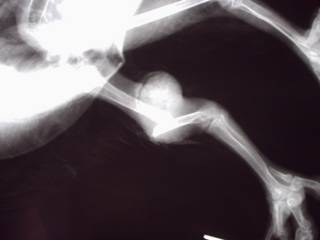Now that winter is here and all the migratory birds are flying south, I figured I'd update everyone on the latest of West Nile Virus in Alaska. I copied this from the
Alaska Dept of Fish and Game website.
West Nile Virus
Surveillance of Wild Birds in Alaska
The Alaska Department of Fish & Game is working in partnership with the Division of Public Heath, Section of Epidemiology, the Alaska State Virology Laboratory, other State, local as well as federal agencies (US Fish and Wildlife Service and US Geological Survey) to conduct surveillance for the occurrence of West Nile Virus in wild birds in Alaska.
Background:West Nile Virus (WNV) was first detected in the Western Hemisphere in New York in 1999. This mosquito-borne virus can cause disease in both human and animals but particular species of birds as well as horses are the most likely to become severely ill or die from the virus. The vast majority of people infected from mosquito bites develop only mild symptoms and never even realize they have been infected with WNV. Even with almost 4000 human cases in the US documented, only about 200 deaths occurred. However, the disease is much more serious for birds and horses than people. In 2002, the disease continued to spread across North America with increasing morbidity and mortality among bird and horse populations. Fortunately, to date, Alaska has yet to record a human or animal case of locally-acquired WNV.
Although we expect to eventually detect the infection in birds migrating to Alaska within the next few years, WNV is unlikely to become permanently established in Alaska's birds for several reasons. Birds that serve as WNV reservoirs must be viremic (have lots of virus in the blood stream) at the time they are bitten by a particular type of mosquito that will also bite mammals. The time the virus is in the bird's blood is brief and transient (believed to be about 2 to 4 days); therefore, many birds migrating to Alaska from an area where the disease is established are likely to have cleared the virus before arrival in Alaska. As well, the mosquito species that are the most efficient vectors (transmitters) of WNV in the Lower 48 are not present in Alaska. Finally, it appears that mosquitoes require sustained warm temperatures, that rarely occur in Alaska, to have the virus grow in numbers to make them infective to their next bite victim. Locally acquired WNV could occur only if viremic migratory birds arrive in Alaska when the appropriate species of mosquitoes are active and when temperatures would permit adequate amplification of virus. With all those factors in place, virus could potentially spill over into non-migratory birds, humans, horses, or other Alaskan animals.
Surveillance for WNV in birds:In most states affected by WNV in 2002, results from WNV testing of dead birds were a sensitive indicator of the likelihood of human disease. Therefore, Alaska WNV surveillance efforts will be aimed not only at detecting disease among humans, but also at detecting WNV among species of birds that appear to be most susceptible to the virus. The bird species in Alaska that are most likely to become recognizably ill or die from WNV include the following: Raven, Crow, Magpie, Steller's jay, Gray Jay,, Blue Jay, Eagles, Falcons, Hawks, and Owls.
To report a dead bird:NOTE: Birds suspected to have been electrocuted, shot, poisoned, or otherwise killed under suspicious circumstances should be reported immediately to the USFWS Law Enforcement Division at 800-858-7621; or, if in Anchorage, at 907-271-2828.
If you find a dead bird of the above species and or a group of dead birds of any species, DO NOT PICK UP THE BIRD.
Instead, contact either of the following:
1) A local wildlife authority:
In Anchorage: Alaska Department of Fish and Game (907) 267-2347
US Fish & WIldlife Service (907) 350-1677
In Fairbanks: Alaska Department of Fish and Game (907) 459-7206
In Juneau: Alaska Department of Fish and Game (907) 465-4148
2) Alaska Department of Health and Social Services Section of Epidemiology at 907-269-8000.
We will determine whether the carcass is of suitable condition and should be tested and arrange with you the most efficient method for collecting the carcass or advise you on how to dispose of it.
Method of carcass disposal:If instructed by a wildlife or public health authority to dispose of a dead bird, use gloves or put your hand inside of a plastic bag to pick up the bird. Double bag the carcass and dispose of it in the garbage.
Surveillance in other wildlife:Investigation of sick or dead wildlife will be handled as always on a case-by-case basis. Please contact the ADF&G Wildlife Veterinarian in Fairbanks at 907-459-7257 or email
WNVinfo@fishgame.state.ak.us




